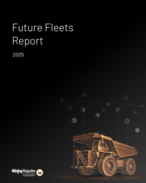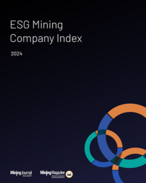This article is 16 years old. Images might not display.
Bottlenecks at its coal ports continue to blight the success story that is the New South Wales mining industry. However, there has been some improvement.
Coal contributes 80% of the state’s mining income, and has participated in the boom in Australian commodities. Alas, there has also been hundreds of millions of dollars in lost sales because of its inadequate ports and railways.
Coal was first exported, to India, in 1799 and by late in the next century Newcastle and Wollongong ports were growing rapidly to cope with the growing trade.
Today Newcastle is the biggest coal port in the world but its shortcomings have attracted more attention in recent years.
A recent indication that its problems, and those of Dalrymple Bay in Queensland, are not yet solved was given by the Australian Competition and Consumer Commission. The ACCC has given the management of the two until December to provide undertakings that they will carry out promised expansions. If they do not, they will lose important exemptions from Trade Practice regulations.
At the centre of the issue are allocation systems that the ACCC claims contravene the regulations because shipping capacity is delivered on a first-come, first-served basis.
This gives bigger companies an advantage because they can afford the cost of having bulk carriers wait in queues to be loaded, shutting out smaller producers.
The ACCC has been disturbed by the big losses in exports and the coal industry is outraged because the ports have not expanded to meet increasing demand.
An example is Port Waratah, which serves the Hunter Valley mines. The ACCC believes it added $250 million to miners’ costs and lost them 20 million tonnes in exports.
By February last year there was a dubious record achieved at Newcastle – 78 coal carriers were waiting to be loaded.
The ACCC has estimated that at Newcastle demurrage – the cost of having carriers lying idle off the port – could reach $460 million this year.
The port’s management recently announced a minor achievement with average waiting times for vessels down to 15 days. More good news may be just over the horizon. The Australian Bureau of Agricultural and Resource Economics expects the coal industry’s bottlenecks to be largely cleared by 2010.
Port Waratah is expected to lift capacity from a recent figure of 89 million tonnes of coal a year to 113Mt by the end of next year.
A third coal terminal at Newcastle will be completed in about two years, handling coal worth $1 billion a year.
Railways provide another bottleneck and the industry is awaiting a decision to build a major line, dedicated to coal shipments. Many coal trains share lines with commuters.
The importance of coal in NSW can hardly be exaggerated. It provides more than 90 million tonnes for export and is also vital to the power, steel and other industries.
Recoverable coal reserves in NSW total more than 10 billion tonnes. This is held within 58 operating mines and colliery holdings, and more than 30 major development proposals.
Forecasts by ABARE predict continued growth in demand for thermal coal in the next decade with hard coking coal requirements growing at a slower rate.
Productivity has increased by 48% in the past 10 years. Saleable tonnes per employee rose from 6920 tonnes in 1996-97 to 10,250t in 2005-06, a slight decline from 11,680t in 2004-05. Production has also been increasing from the state’s longwall and opencut mines.
This means NSW is well positioned to supply an increased share of the growth in world energy requirements from black coal, provided its bottlenecks are removed.
Asia is the major market for NSW coal, with the region buying 90% of exports. Japan has been the largest single export destination for the past 20 years and dominates the thermal and coking coal export market. It takes just over half the export of each. Other major buyers are Taiwan and South Korea.
The coal industry and governments are allocating hundreds of millions of dollars for research to produce “clean coal”. While this may not be commercially ready for five or 10 years, the industry remains confident it will be able to meet the Greenhouse challenge. Coal miners have committed $1 billion over the next decade to the Coal 21 Fund, which is dedicated to this research.
Published in the April 2008 Australia’s Mining Monthly























